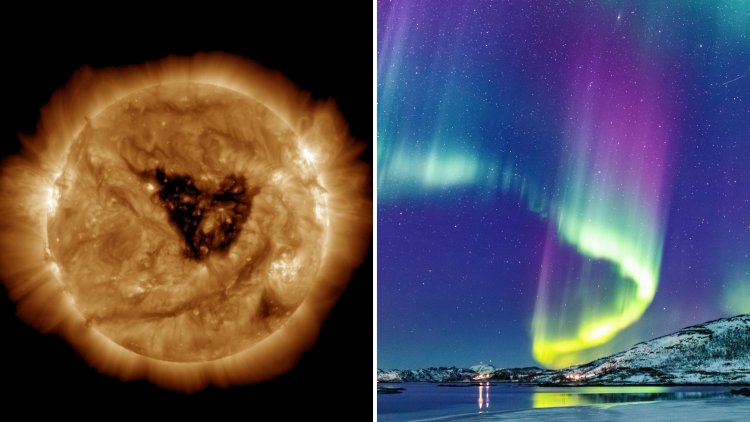Massive Butterfly-Shaped Hole on the Sun May Spark Geomagnetic Storms on Earth

A jaw-dropping, butterfly-shaped hole has opened up in the Sun’s atmosphere and it's heading Earth's way. Captured on September 11 by NASA’s Solar Dynamics Observatory (SDO), this 500,000-kilometre-wide coronal hole is not only stunning in shape but significant in its potential impact on Earth’s magnetic environment.
Known as a coronal hole, this dark region on the Sun is an area where the magnetic field lines open outward, allowing streams of high-speed solar wind to escape into space. In extreme ultraviolet images, coronal holes appear darker because they contain less dense and cooler plasma compared to their surroundings.
This particular hole is venting a steady stream of solar particles that is currently traveling through space and expected to reach Earth around September 14. Once it arrives, it could trigger G1 to G2-class geomagnetic storms. While not severe, these storms are capable of disrupting satellite operations, interfering with GPS and high-frequency radio communications, and even affecting power grid stability in sensitive regions.
Adding another layer of concern is the Russell-McPherron effect, a phenomenon that occurs around the equinoxes, when Earth’s magnetic field becomes more aligned with the Sun’s. This increased magnetic connectivity makes it easier for solar wind to interact with Earth’s magnetosphere, enhancing the potential for geomagnetic disturbances.
The Solar Dynamics Observatory’s imagery not only showcases the extraordinary butterfly-like symmetry of the coronal hole but also provides crucial scientific data for forecasting space weather events. As we approach the peak of Solar Cycle 25, solar activity like this is expected to become more frequent and more intense, making continued monitoring vital for satellite operations, communications, aviation, and electrical infrastructure.
If the forecast holds, skywatchers in high-latitude regions might be rewarded with intensified auroras on the nights of September 14 and 15. Meanwhile, scientists and space weather agencies around the globe are on alert, watching to see how this beautifully chaotic solar event unfolds and how it might affect life here on Earth.























